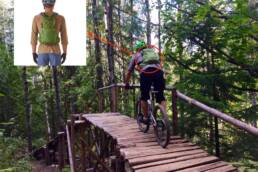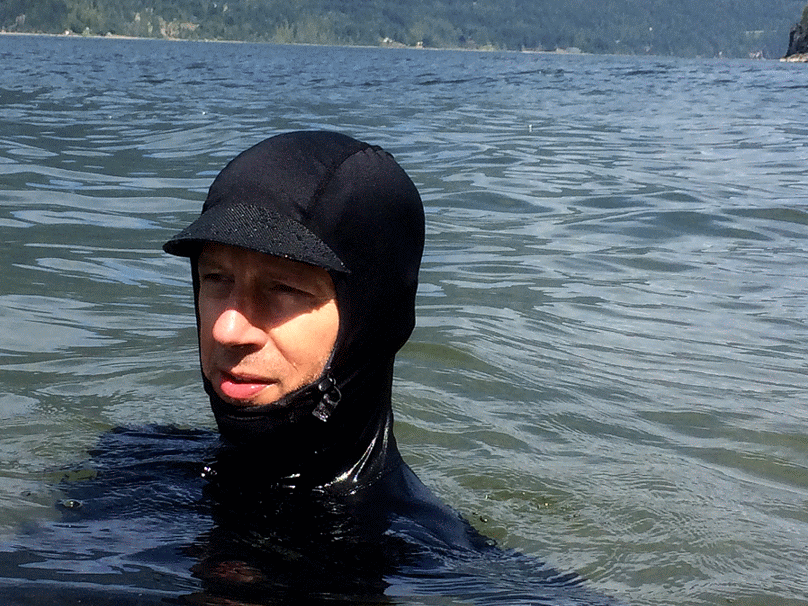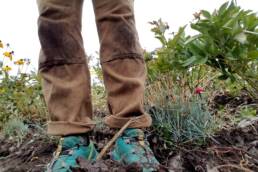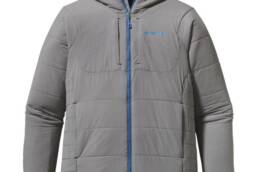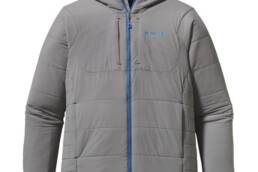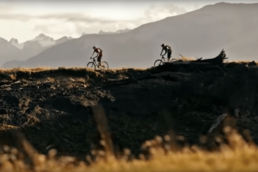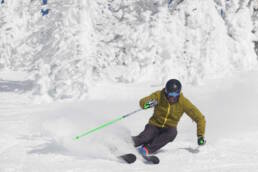Patagonia has returned to its roots with the simplistic, minimalist Nine Trails series of backpacks. But do they hold up? Our online editor put his back into this review.
In its first catalogue in 1972, Chouinard Equipment (the precursor to Patagonia Inc.) offered three backpacks for sale: the Pocket, Mountain, and Jenson packs. Each had a soft frame and a very minimalist design that eschewed multiple pockets, zippers, and other accoutrements that would later find their way onto all gear in the 1990s. (I remember one manufacturer around that time boasting its small day pack had 14 pockets. Fourteen!) Patagonia seems to have come full circle with its new Nine Trails series of backpacks and “you won’t find a bunch of special widgets, straps or complicated systems here – these packs offer true engineered simplicity” says the company’s literature. I was sent the men’s 28-litre and 14-litre models to try them out and see if simple is superior.
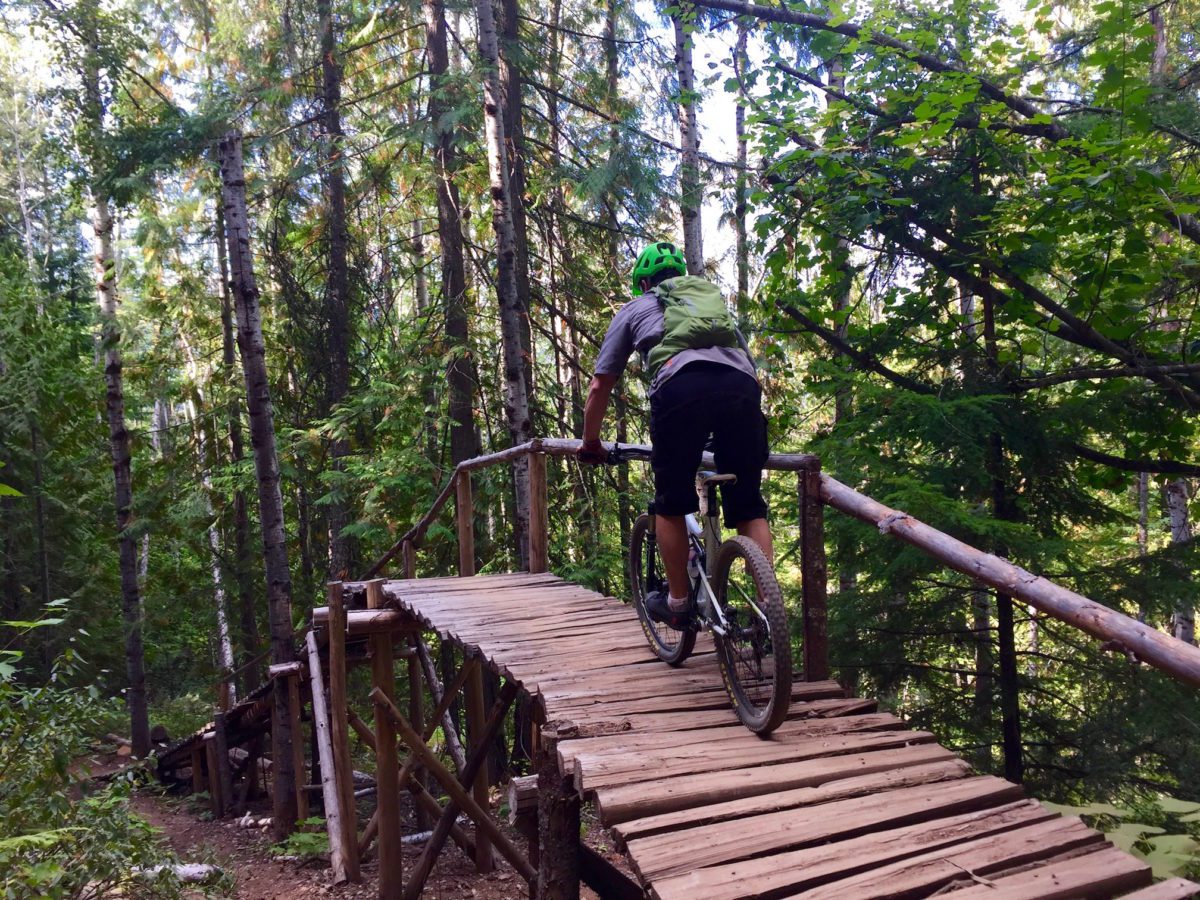
Snapshot: Patagonia Nine Trails Backpack
-
- Pros: So comfortable! The Cordura nylon fabric feels like eighteen-ply toilet paper.
- Cons: Nine pockets in the 14L version? I thought this was supposed to be simple.
- Price: 28L = $199 Cdn / 14L = $169 Cdn
- Who Should Buy: Mountain bikers and hikers.
- Who Shouldn’t Buy: Rock climbers.
- Helpful Hack: The tube on the water reservoir in the 14L version is designed so you can trim it for length.
- Author’s overall rating: 8/10
The Test
As mentioned above, I was sent two versions of Nine Trails packs: the 28 litre and the 14 litre. One I lacerated almost immediately and one I used practically every day throughout the summer and autumn months in the mountains around my home in Nelson, British Columbia.
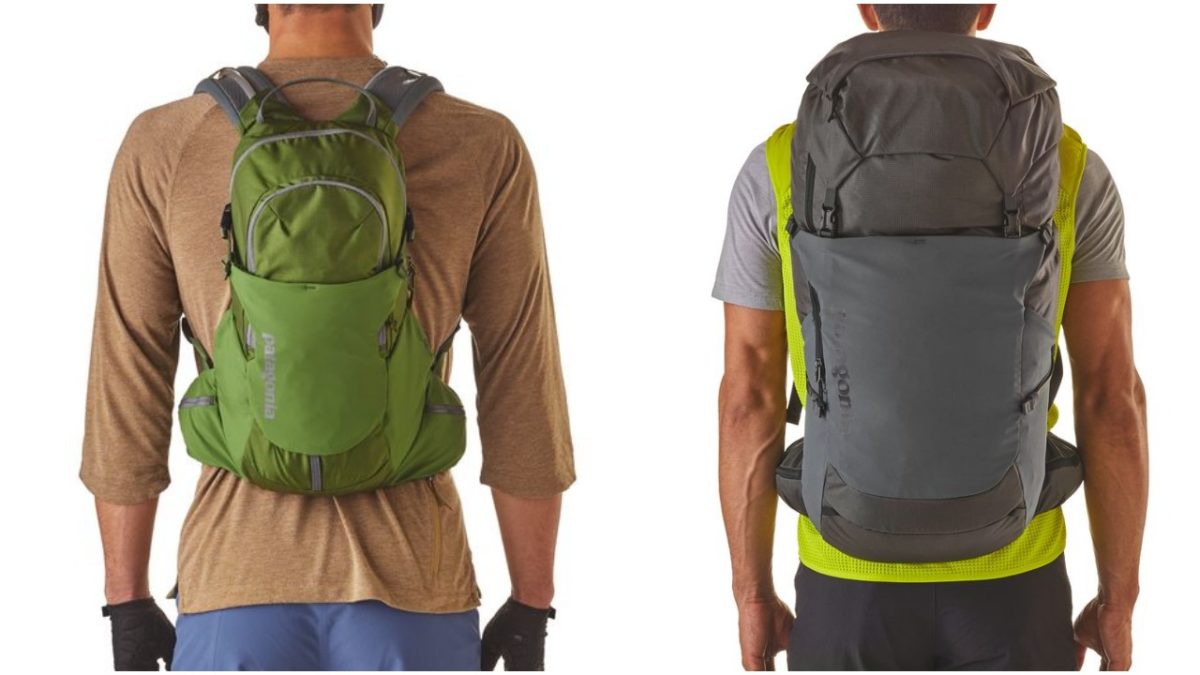
The Verdict
I absolutely loved the 14-litre version of the Nine Trails pack and I absolutely did not do justice to the 28-litre version. Soon after receipt of the packs, I took the 28L on a multi-pitch climb and, at one point, had to doff the pack and drag it up a sharp gneiss face. Afterwards, the soft, stretch fabric on the outside of the pack looked like I had stabbed it with an ice pick. The rip-stop nylon did a good job of preventing a sustained cut, though, and I have to say the pack’s Cordura is amazingly comfortable to the touch. But, this is most definitely a hiking pack, not a rock climbing one and that’s on me because the company says its for “hiking and scrambling,” not rock climbing. Because most of my season was spent hiking to alpine climbs, the pack didn’t see a lot of action.
That said, I used the 14-litre version of the Nine Trails pack almost every day. I’m lucky to have an amazing series of mountain bike trails in my backyard and the 14L was perfect for daily jaunts. The shape of the pack is such that it hugged my torso but was never too hot thanks to the super breathable mono-mesh back panel. And it’s surprisingly spacious interior held a two-litre water bladder (which comes with the pack), spare tube and all my tools, first aid kid, a Patagonia Micro Puff Hoody, cellphone and snacks in the waist belt pocket. On one memorably humid ride I stuffed my long-sleeve into the expandable outer pocket and was impressed with how much it stretched without making the pack awkward to carry.
Other touches I like of the 14L Nine Trails pack include the padded shoulder straps and waist belt that are perforated to allow for more airflow. Plus the waist belt has an offset clip so it’s not pressed against your navel as you ride. Also, the two compression straps cinch the whole pack tight making it even more streamlined and comfortable to wear.
The one thing I was surprised by with both Nine Trails packs is the plethora of pockets. The 14L has a total of nine, including the bladder reservoir. It seems a bit excessive: for example, I never use the two quick stash pockets on the sides. But this is a minor thing as it doesn’t add bulk. But does it add weight? The packs weigh the same amount as their respective precursors from 1972. Then again, I’m sure they’re a thousand times more comfortable.
In conclusion, I’m happy to say the 14L Nine Trail backpack is now part of my daily kit while the 28L version waits patiently for me to go on a hike that doesn’t involve rock climbing.
Patagonia Nine Trails Backpacks
 28L Pack – The Deets
28L Pack – The Deets
-
-
- MSRP: $199 Cdn
- Weight: 1000 g / 2lbs 3oz
- S/M: 53 x 25 x 15cm (21 x 10 x 6″)
- M/L: 50 x 25 x 15 cm (23 x 10 x 6″)
- Body material: 4.2-oz 210-denier Cordura 100% nylon ripstop
- Lining: 3.3-oz 200-denier 100% polyester. Both with a polyurethane coating and a DWR (durable water repellent) finish
- Padded shoulder harness with adjustable sternum strap and waist belt
- Breathable mono-mesh back panel
- Side compression straps
- Exterior stretch pocket and two quick-stash side pockets
- Extended U-shaped zipper to main compartment and multiple stash pockets inside
- Colours: Forge Grey, Classic Red, New Adobe, Viking Blue
- Available in Men’s and Women’s fit
 14L Pack – The Deets
14L Pack – The Deets -
- MSRP: $169 Cdn
- Weight: 610 g / 1lb 5oz
- S/M: 45 x 19 x 15cm (18 x 7,5 x 4.3″)
- M/L: 50 x 25 x 15cm (20 x 7.5 x 4.3″)
- Body material: 4.2-oz 210-denier Cordura 100% nylon ripstop
- Lining: 3.3-oz 200-denier 100% polyester. Both with a polyurethane coating and a DWR (durable water repellent) finish
- Padded shoulder harness with adjustable sternum strap and waist belt
- Breathable mono-mesh back panel
- Side compression straps
- Exterior stretch pocket and two quick-stash side pockets
- Full-access panel-loader for easy organization of your gear; large main compartment with front tool pocket
- Colours: Forge Grey, New Adobe, Spouted Green, Strait Blue, Smokey Violet
- Available in Men’s and Women’s fit
-
Vince Hempsall
Vince Hempsall lives in the beautiful mountain town of Nelson, British Columbia, where he spends his time rock climbing, backcountry skiing and mountain biking (when not working). He is the editor of Kootenay Mountain Culture Magazine and online editor for the Mountain Culture Group.
Related Stories
Honest Review: Patagonia R0 Hoody
Wanna look like a Navy Seal? We suggest donning the Patagonia R0 Hoody the next time you're hanging in, on or by the…
Honest Review: Patagonia Iron Forge Workwear
To supplement her writer's income and keep the vampires at bay, editor Clare Menzel works on a garlic farm. So we asked…
Review: Patagonia Nano-Air Jacket
You may notice we don't review a ton of gear on here, but when we stumble across certain products we feel we…
GEAR REVIEW: Patagonia Nano-Air Jacket
You may notice we don't review a ton of gear on here, but when we stumble across certain products we feel we…
Review: Patagonia Dirt Craft Jacket & Shorts
Patagonia’s entry into the mountain bike apparel business has been long awaited by fans of the California company’s…
Honest Review: Attitude Skis
Attitude Skis are the latest offering by the Fels brothers and engineer David Horsefield. Do they have a good attitude?…


